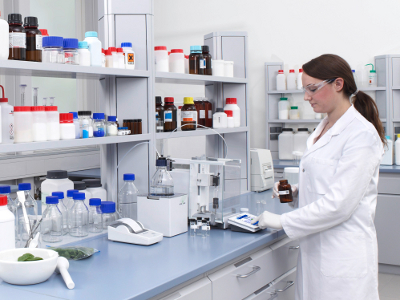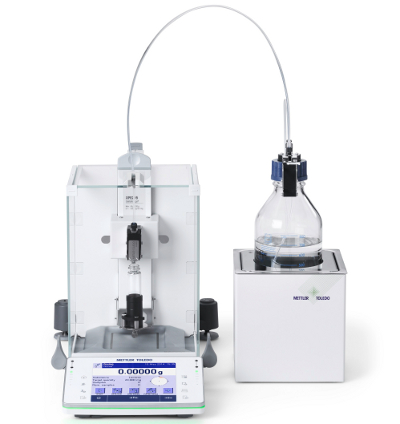Pharmaceutical laboratories are often asked to be more productive despite greater budget restrictions, a situation that can lead to crisis management, as opposed to continual assessment and optimization. Analysts want to do their jobs well, report high quality, defendable data, feel as though they are stakeholders in workplace success and grow professionally while meeting critical customer or business needs.
Hence, the pressures of modern pharma labs may be putting the quality of results and compliance with regulations at risk, something that will ultimately affect patient safety. The answer may lie in developing a culture of proactive and continuous improvement, including making time to adopt appropriate new technology. In fact, developing a willingness to review and revise at every level becomes absolutely necessary when balancing the goals of ensuring quality and safety while enhancing productivity.
Of course, not following and adopting current methods and technologies can be the riskier path, as there is a danger of leaving the industry’s top advancements on the table, giving competitors an advantage.
So, how can busy labs adapt intelligently? A good start is to answer the most basic and oldest lines of scientific inquiry when investigating any new concept or idea: Why? How? What?
- “Why do we need to make these changes?”
- “How will these changes affect our processes?”
- “What technology do we need to implement?”
In fact, the “why” and the “how” are initially more important than the “what.” Answers to these questions can help to give direction and help define what new instruments, technologies or techniques are required to ensure a lab remains productive and up to date with evolving industry standards.
The way that “why” is answered may depend in part on who writes the test methods and develops the standard operating procedures. Do the analysts who are physically doing the work have the ability to develop priorities as long as business timelines are met? Can they initiate change if something is not working efficiently? Can they request changes to a process if they know it will bring about enhanced speed and fewer errors?
There are advantages in having SOPs or test methods being written by the personnel who actually carry out the procedures: First there is ownership and opportunity for professional growth. Second, feedback within the lab should be more transparent. It fosters the environment of “if something needs improving, it can happen,” instead of just living with the problem. Importantly, management is still responsible for ensuring technical correctness and that quality assurance (QA) requirements are met.
Having the lab personnel as stakeholders is crucial to a well-functioning lab and has a positive impact on professional growth and employee retention. A laboratory is more likely to have out-of-specification (OOS) errors when the analysts are following an SOP that somebody else has written, especially if the author is in a separate group or department. The risk is that the instructions may not be clear, opening up a potential for interpretation. If something needs to be changed, it could be harder to resolve, since the author may not have a priority to make the changes or make them quickly. Finally, a person who does not work on the bench will not understand how the lab works. Clearly, these potential issues are much less likely to happen if the analyst is also the author of the SOP.
A poll of 136 participants conducted during a recent webinar1 indicated that for just over half of the respondents, their standard operating procedures are written by the laboratory analysts or scientists who actually carry out the work (51%). A further 39% are written by the laboratory managers or supervisors who are not hands-on but are accountable for the results. However, 7% of the SOPs are written by a separate group or department who has minimal contact with the laboratory, such as a corporate quality control (QC) group.
Making sure that new technologies, techniques or processes perform at least as well as what is being replaced is paramount. Capturing efficiency at the expense of accuracy, for example, doesn’t make good scientific or business sense.
This leads to an important consideration when determining “what new technology” to implement in a lab: Will the new equipment bring about an improvement in quality and a reduction in OOS results?
Once an OOS result is discovered, an operator checks his or her work. If no obvious error is found, the supervisor gets involved and contacts QA to launch an official investigation. More people get engaged with the data, delivering an even greater impact on lab productivity. Then, more documentation in accordance with the lab’s OOS investigation procedures is required. If no assignable cause is found by then, the investigation likely expands to manufacturing or with a stability sample, looking into the available histories of both the drug product in question and active pharmaceutical ingredients (APIs).
Ultimately, how many people get involved in internal—or, at worst case, regulatory or U.S. Food and Drug Administration (FDA)—investigations? How much time is committed to such efforts? According to Merck’s estimates, a one-day investigation requiring a single analyst reworking samples or standards costs at least $800. A multiweek investigation can cost tens of thousands of dollars in personnel time and even more in hard resources when it involves expensive or limited availability substances.
From these estimates, it is clear that wherever a technology can help reduce OOS results by providing ongoing accuracy, its adoption is likely to be worthwhile. It can add to a pharmaceutical manufacturer’s bottom line in ways that may be difficult to quantify but are very real indeed.
The introduction of new technologies or techniques often impacts more than just the target, so a holistic view should be taken and the “how” adapted to optimize existing workflows. Instead of forcing new technology into current configurations, try to discover where it can transform a lab. New technology is sometimes introduced for the sole purpose of precisely replicating a manual technique: the goal is simply gaining efficiency by automating a process. This approach is short-sighted and can make the technology more difficult to implement. Some time-saving gains may be made, but more significant accuracy or productivity gains may be overlooked by keeping such a narrow perspective.
 Figure 1 ‒ Thermal printers and electronic data collection improve data management and traceability.
Figure 1 ‒ Thermal printers and electronic data collection improve data management and traceability.Truly robust solutions, in nearly every case, can do more than simply replace a manual procedure. For example, if a lab introduces an instrument that is able to collect data electronically, it offers more than the ability to print out paper weight slips, mimicking manual journals but eliminating the risk of transcription error. In addition, the lab gains an ability to import these results directly into a chromatography data system, lab information management system (LIMS) or electronic notebook and further analyze data (see Figure 1).
Much of an analyst's time is taken up with manual sample preparation, which is reportedly the largest single contributor to errors in the analytical process.1 A good example of the ability of new technology to improve ongoing lab processes is the shift from manual volumetric sample preparation to automated gravimetric dosing. The last major revision to United States Pharmacopeia (USP) 1251 specifically describes this state-of-the-art weighing method, which is typically used for sample and standard prep.2
Gravimetric sample preparation involves weighing both the solid or standard and then the liquid component for precise concentrations. First, the solid is weighed into a vial, typically using an automated dosing head. The precise amount of liquid is then weighed into the vial using an automated dosing head, with the diluent amount calculated automatically from the actual amount of solid dispensed.
 Figure 2 ‒ Automated liquid dispensing with Quantos solution reduces the risk of errors.
Figure 2 ‒ Automated liquid dispensing with Quantos solution reduces the risk of errors.Introducing gravimetric sample preparation provides more than precise concentrations, it also eliminates: subjectivity in filling to the line and reading meniscus associated with volumetric flasks; impact of temperature variation on the concentration; cross contamination risk (inherent with glass flasks); and the risk of using the wrong flask or pipet (see Figure 2).
Additionally, lab management benefits from audit-proof results documentation and an electronic record of all weights and concentrations.
So, the lab can replace a manual process and achieve significant time-savings and higher precision. The lab will also gain an ability to produce accurate, usable samples with significantly less substance and diluent. This change typically saves 75‒80% of substance and solvent usage, which adds up to appreciable savings in both hard monetary costs and reduced rework.
Worthwhile savings, such as those gained in the sample preparation example, often start when lab management develops a culture that allows time for a complete review of lab procedures and allows those doing the day-to-day work to participate.
New technology should be viewed as more than just a replacement for current processes. Allow for the possibility that it can truly transform the lab for the better and do the hard work up front to determine why changes should be made and how they will impact current workflows.
The likely reward will be seeing cumbersome practices left behind, good science and compliance maintained, and lab processes simplified to enhance accuracy, productivity and long-term profitability.
For more information, watch the on-demand webinar: www.mt.com/labtec-avoid-OOS
References
- On demand webinar, “Avoid OOS Results: Weighing & Sample Prep Tips”; www.mt.com/labtec-avoid-OOS
- General Chapter <1251> “Weighing on an Analytical Balance,” Second Supplement to USP36-NF31, June 2013, Rockville, Maryland, online edition.
Joanne Ratcliff, Ph.D., is a communications manager at Mettler-Toledo and former product manager for the Quantos Dosing Solutions Group. She is an analytical chemist with more than 15 years of experience in automated solutions for pharmaceutical laboratory applications. Her key focus and area of expertise is automated weighing and powder dispensing.